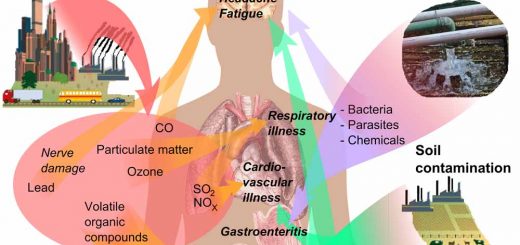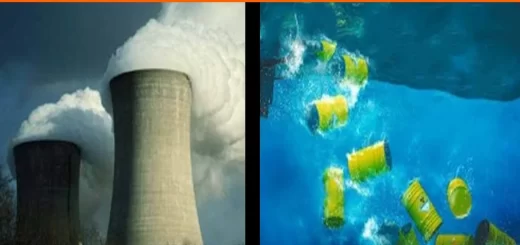Flood advantages, disadvantages, types, causes and risks
A flood is a large body of water in some areas where it becomes destructive and impedes the natural cycle of living organisms, It may be a result of long periods of heavy rain, or rivers or lakes, When the temperature is high, It can cause flooding as they cause the ice caps and the snow to melt quickly.
Floods
Many areas are prone to being inundated by floodwaters during times of heavy rain, snowmelt, or high tides, Floods are an area of study in the discipline of hydrology and are of concern in agriculture, civil engineering, and public health, Floods are very important processes for the natural environment, and humans also benefit from them.
A flood is an overflow of water that normally covers the dry ground, It can refer to the tide’s inflow when used in the sense of “flowing water,” Flooding can happen when water from bodies of water, such as rivers, lakes, or the ocean, overflows and breaches levees, allowing some of the water to stray outside its customary confines, it can result in flooding when rainfall gathers on soggy soil.
Floods can make the land fertile, add nutrients to the sea, dislodge accumulated debris, supply sediment to deltas, recharge underground water levels, and balance the health of wetlands. Flooding leaves behind fine sand, clay, silt, and organic matter. floodplains are one of the most fertile agricultural areas in the world. The flooded soil environment allows the cultivation of many crops like rice.
People have come to regard floods as disasters in terms of lives lost and property damage, Although, floods can be devastating to population centers, they have been an integral part of nature’s renewal process. Flooding distributes and deposits river sediments over large areas of land, These river sediments replenish nutrients in topsoil and make agricultural lands more fertile.
Flood advantages
There are many benefits of flooding despite its immediate ill effects, For the farmers and the people in the agricultural sector, It helps them in the long run by providing nutrients to the soil that were lacking, Making the soil more fertile, and increasing agricultural production.
The nutrients are also added to the rivers and the lakes, They improve the health of fishes that can be consumed, There may be the relocation of fishes and the organisms living in the water bodies, flooding may improve the ecosystem, New predators and prey are introduced to the areas, balancing the aquatic population.
The floodplains are relatively flat lands adjacent to a body of water such as a river or a stream that becomes flooded (inundated with the water) when the channel capacity is exceeded, and the floodplain surrounding the river is used as agricultural land.
The floodplains are dynamic natural systems, natural processes of periodic flooding, accompanied by erosion and deposition, They bring changes to the topography, the soils, the vegetation, and the physical features within these areas over time.
The floodplains provide a wide range of benefits to the ecosystem and community, flood storage and erosion control provide a broad area with streams and rivers to spread out and accommodate temporary storage of the floodwater, reducing the flood peaks and the erosion potential.
The flood offers groundwater recharge, It provides the habitat with a variety of fish and wildlife including rare and endangered species, It offers biological productivity, It provides fertile soils with a high rate of plant growth and diversity, richer agricultural harvests, and healthier forests.
Zebras, impalas, and other wildlife can die of thirst, hunger, and weakness because of this, so, flooding during the rainy season not only fills rivers but also wipes away all unwanted debris. Deltas form when sediment accumulates across rivers faster than the sea removes it, They are very productive regions that protect the coast against waves and storms, As floodwaters hit estuaries, they also deposit sediment on deltas, thus fortifying them.
Floodplains offer cultural, educational, recreational, and scenic values to humans, floodplains include many archaeological and historical sites, Floods contribute to the health of ecologically important wetland areas, Healthy wetlands promote healthy water supplies and affects air quality, and Flooding inundates wetlands with fresh waste.
Floodways are defined as that area of the watercourse that is necessary to carry the base flood without increasing the water surface elevation more than one foot, Development is heavily regulated in floodway areas, Riverine systems are important habitats for a variety of fish, reptiles, vegetation, and fur-bearing wildlife. These systems provide feeding and breeding grounds for these species.
Floods can dislodge materials that block rivers and estuaries, Debris such as branches, logs, and boulders often hinder the movement of water in rivers, they can inhibit the flow of water altogether leading to droughts downstream, Debris can block river flow causing droughts downstream, so, floods can dislodge this debris.
Disadvantages of the Flood
Heavy floods can be so disastrous that the infrastructure is washed away, The people and the animals drown, and people can be stranded for long periods, The society and the economy of the country will suffer in many ways after the flood.
The loss of lives, vegetation, and infrastructure means there will be fewer people in the labor force, less agriculture available for the locals and the exportation, and fewer businesses to contribute to the economy of the country.
There will be mass dislocation of people, many people may be left homeless and jobless, So, The government will have to spend a little more, The country may seek assistance from foreign countries to supply the food and the materials to clean and replace the infrastructure.
Floodwater can be dangerous when they have more depth and speed, It is very dangerous to walk or drive through the floodwater when they are six inches of water that can cause unstable footing, and two feet of water can cause the car to be swept away.
More people drown in their cars in floods than anywhere else, Floods and storms also can knock down power lines and electrical currents can travel through the water. Floodwater may carry silt, raw sewage, oil, or chemical waste, If you can wear gloves and boots to avoid coming into contact with floodwater if you touch the floodwater, you are advised to wash your hands thoroughly.
If the wells are flooded, The well will be contaminated, If you are on a public water system, You should listen to TV or radio to know if it has become contaminated, floodwaters can also damage the structures and the contents. The rivers, especially the big ones can cause a lot of mayhem, When they flood, they destroy livelihoods, They cause economic damage and they kill people.
Flooding can destroy everything in their path, resulting from a river overflow or a dam failure, It causes property damage by flooding homes, buildings, and bridges, It can start fires that end in explosions, It can harm sewage networks as well as drainage systems, Waste material consequently overflows, causing contamination, Or they contaminate water sources, rendering the water unsafe for human consumption.
Flooding causes forcing long-term evictions of communities and accelerates the spread of mosquito- and water-borne diseases, It causes damage to a building or business if it is situated in a river’s natural floodplain, It can result when water is produced by snowmelt or rainfall in low-lying areas more quickly than the ground or runoff can absorb it.
Floods lead to economic losses, As floods destroy transportation and communication networks, people cannot work, They wipe out agricultural land or transmit diseases to farm animals, Regions that depend on coastal tourism and associated businesses suffer significantly as well, Floods can affect their properties or discourage tourists from visiting such places, While such businesses have insurance cover to build back, it is another battle to get hold of that money.
Floods can wipe away significant amounts of sediment, This can lead to bank erosion, collapse or landslides where the terrain is steep. flooding can stimulate algal blooms in the sea, lakes, and rivers, A load of nutrients especially phosphorous and nitrogen stimulates algae to grow and multiply rapidly, they cover the surface of the water preventing oxygen from penetrating inside, so, organisms that live inside die.
Floods can kill a lot of people, if they are not well prepared for the floods, floods may result in physical or mental health problems for many people, They lead to water pollution, which in turn causes illness outbreaks, including diarrhea and gastroenteritis, They disturb the livelihoods of numerous populations by destroying farms and crops.
You can follow science online on YouTube from this link: Science online
You can download Science online application on Google Play from this link: Science online Apps on Google Play




Good👌
Thank you
Nice and helpful
Thank you for your comment
Nice, interesting
Thanks
You are welcome
Thank you for your comment
good I am using this for school during covid
Thank you for your comment
nice it helps full for projects
thank you